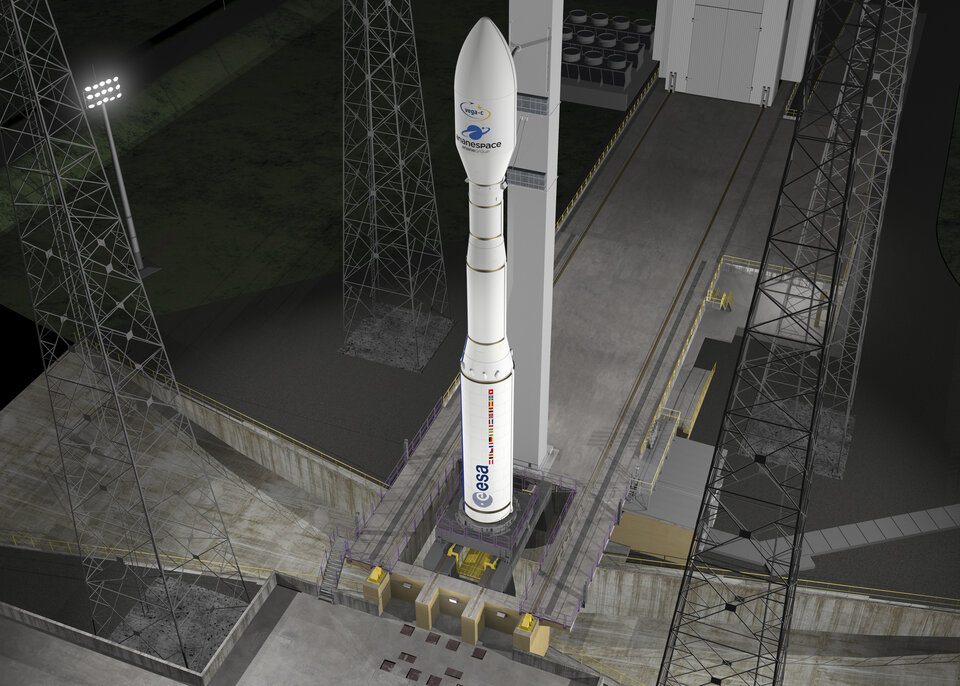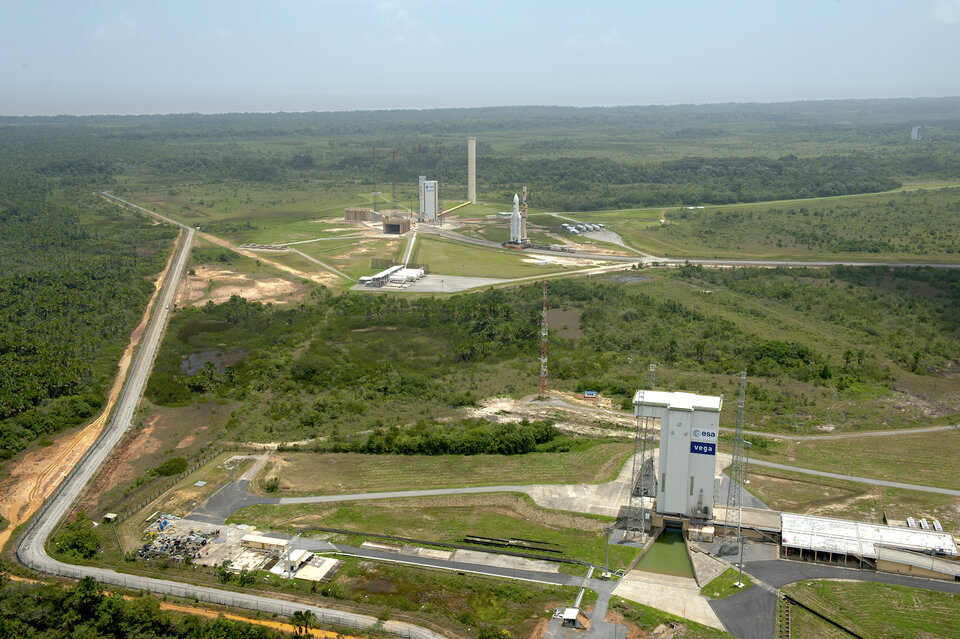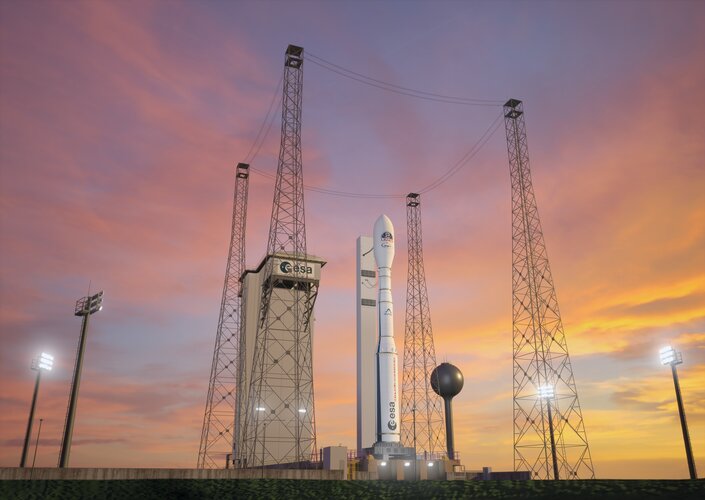Launch
FLEX will be taken into orbit on a Vega rocket from Europe’s spaceport in Kourou, French Guiana. Liftoff is scheduled for 2025.
Named after the second brightest star in the northern hemisphere, the European Vega is a single-body rocket with three solid-propellant stages and a liquid-propellant upper module for attitude and orbit control and for satellite release.

With a height of 30 m and diameter of 3 m, the launcher can place 300–1500 kg satellites into the polar and low-Earth orbits used for many scientific and Earth observation missions.
Costs are kept to a minimum by using advanced low-cost technologies and by introducing an optimised synergy with existing facilities used for Ariane launchers.
Development of the launcher started in 1998. The first Vega lifted off on 13 February 2012 with a flawless qualification flight from Europe’s Spaceport, where the Ariane 1 launch facilities have been adapted for its use.
The pad infrastructure has been adapted to meet Vega’s requirements. It retains the original flame ducts, which channel Vega’s exhaust gases during ignition and liftoff. A new fixed umbilical mast provides power and environmental control connections to the launcher and its payloads from mission preparation to the final countdown and liftoff.
Launcher preparation takes place on the pad inside a mobile gantry that houses all the support equipment to assemble and check the vehicle. The gantry provides a protected environment for launch personnel. Its height is 50 m and weighs more than 1000 t.

The Vega launch site is located at the previous ELA-1 complex, originally used for the now retired Ariane 1 and Ariane 3 missions.
The Operational Control Centre for Vega is in the Launch Control Centre built for Ariane 5. It houses Vega’s operational and monitoring systems.
Vega payloads benefit from Ariane 5’s state-of-the-art facilities. The payload preparation buildings accommodate satellite and control equipment unpacking, mechanical assembly work, electrical and mechanical inspections, and checkout of the various platform and payload subsystems.
Final integration of the payload composite takes place at the complex before its transfer to the launch pad for hoisting onto the top of the launcher.
The launch site at Kourou lies at latitude 5°3', just over 500 km north of the equator.
Safety is equally important. French Guiana is sparsely populated and 90% of the country is covered by equatorial forests. In addition, there is no risk of cyclones or earthquakes.
In orbit, FLEX will be operated from ESA’s European Spacecraft Operations Centre in Germany.
Back to FLEX homepage |







